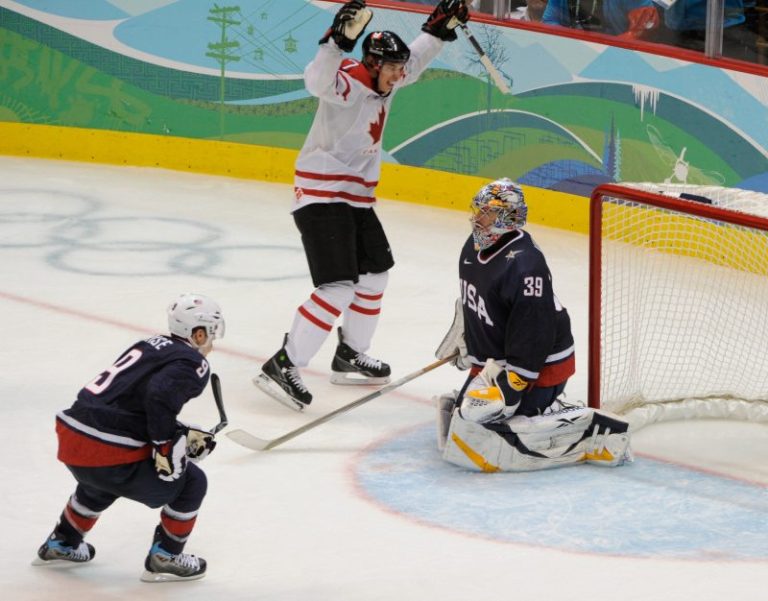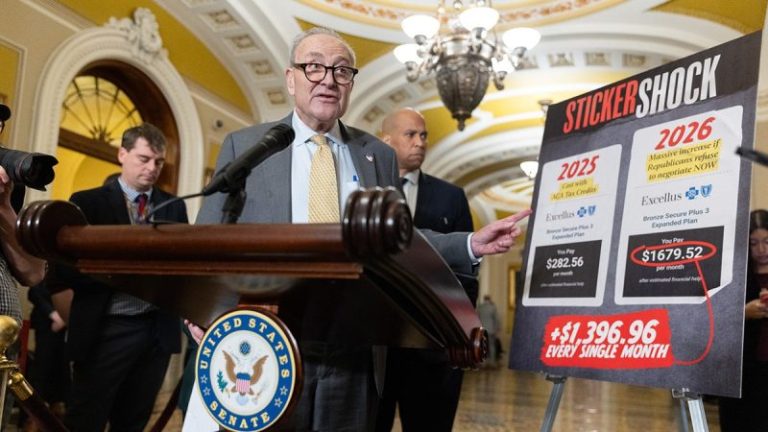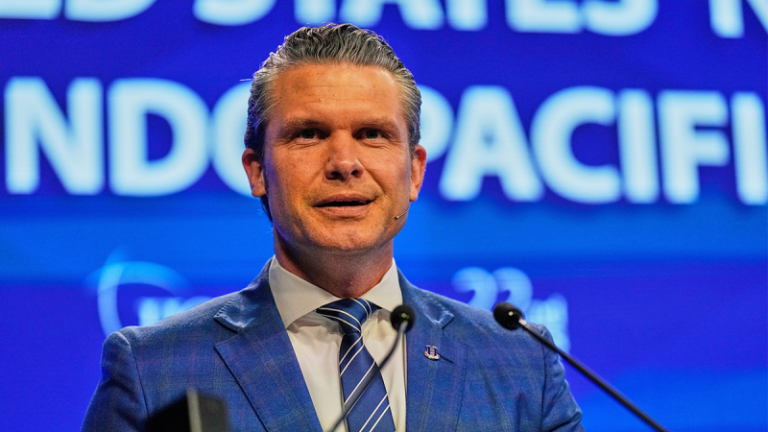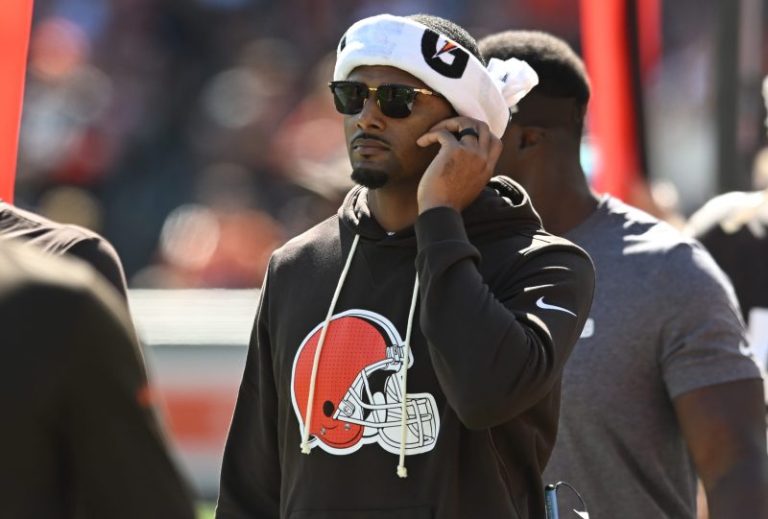HURRICANE MILLS, T.N . – Two medics rolled Ashlee Sokalski onto a backboard and fitted the 19-year-old with a neck brace in the middle of the dirt motocross track.
Other teen racers whizzed past on their off-road motorcycles, no halt to the race, no safety flaggers in sight.
Sokalski had sharpened her race skills for years and finally broke through a Mideast regional qualifier to be here at Loretta Lynn’s Ranch among the dust and roar of the sport that ran in her family’s blood.
But just minutes into the race, Sokalski flew off her Yamaha YZ250 motorcycle and another rider ran her over.
Her neck, skull, shoulder, leg and wrist were broken. Her right lung was crushed. She was barely breathing and had a faint pulse.
The record of the 2010 national motocross championship listed Sokalski’s official result as DNF: Did not finish.
The injuries would kill her.
A USA TODAY investigation found that at least 158 children and teens have died on dirt bikes and at motocross tracks since 2000, more than six per year. That makes it the deadliest sport for young people – roughly seven times greater than tackle football.
Nineteen of the fatalities involved riders 10 years old or younger.
The sport is inherently dangerous, but fatal incidents follow a pattern where safeguards are ignored. The investigation showed riders of significantly different ages and sizes compete on the same courses, many of which include obstacles such as fences, trees, and vehicles too close to the tracks.
Can’t see the track graphic above? Please click here to reload the page.
Sokalski arrived at Nashville’s Vanderbilt Trauma Center three hours after her crash. She never regained consciousness and died five days later with her family at her side.
A devoted cohort of America’s young dirt bike racers nationwide are pulled to the sport that culminates each July at Loretta Lynn’s Ranch. The week-long competition is filled with deafening engines, colorful race uniforms and the odor of race fuel exhaust in the air.
Those annual championship races are sanctioned and produced by the biggest names in amateur motocross racing, the American Motorcyclist Association and MX Sports. Track owners and race promoters nationwide often don’t enforce their own safety rules, the newspaper found.
Only a handful of states mandate safety requirements for motocross tracks, and most do not set age minimums. Some parents sign off on children as young as 4 driving motorbikes competitively.
A spokesperson for the AMA said it has longstanding safety protocols for its sanctioned events and can’t control unaffiliated tracks. Skirting standards results in expulsion from the AMA and participation in their preferred insurance program, the statement said.
Of the 158 deaths, nearly two-thirds occurred at a track. The others occurred at other off-road venues like dunes, trails and backyards. The review excluded on-road incidents.
Of the on-track wrecks, USA TODAY identified 65 deaths at tracks that host AMA-sanctioned events. It’s unclear in some cases if those deaths occurred during practice sessions or races.
Sanctioning and AMA-insurance requires track owners to attest they will adhere to safety requirements and watch two risk management YouTube videos.
The organization declined to release its own data on injuries and deaths but said “multiple tracks” had been stripped of their sanctioning in recent years.
“The overwhelming majority of youth fatalities do not occur at AMA-sanctioned events or AMA-insured tracks,” the AMA wrote in a statement. “The environment, supervision, and safety standards at non-sanctioned facilities vary widely and often do not reflect AMA requirements.”
USA TODAY was unable to confirm a tally of deaths at AMA-sanctioned events and insured facilities.
Similarly, race promoter MX Sports said it has no influence over the races it doesn’t produce.
MX Sports said its records showed two young riders had died at its own events since 2000. However, to qualify for those events, racers must compete at non-MX Sports competitions. USA TODAY’s analysis found 23 deaths at races that serve as qualifiers toward MX Sports’ flagship event.
National standards could prevent youth deaths. Tracks could have onsite medical staff, trained flaggers, split track times for different ages, insurance requirements and safety barricades.
On the floor of the Massachusetts Legislature last summer, MX Sports Event Director Tim Cotter testified in favor of more regulation and safety measures.
“They all sound difficult, but they are not and could be easily done,” Cotter said. “Every track in America should have those minimum standards.”
But they don’t, and the death rate that’s sevenfold football’s rate is making it the most dangerous youth sport, according to the review. In 2025, approximately 17,000 kids from ages 4 to 19 competed in an AMA-sanctioned motocross event, according to the organization.
The higher death rate associated with motocross aligns with research on race competition injuries that show it causes 20 injuries per 1,000 young riders. That’s compared to 4 per 1,000 in all high school sports and 12 per 1,000 in football.
Motocross deaths often go unexamined and uncounted when they occur on private property and without foul play. Highway motorcycle wrecks flow into a federal database, but deaths on off-road dirt bikes don’t.
Reporters scoured news accounts and online discussion boards and obtained ambulance, police and coroners’ reports to verify the number of deaths.
David Pingree, a former professional racer who covers the sport as a journalist, has become a critic of safety lapses that go unexamined.
“It’s not acceptable to go, ah, so sad. All right, on to the next race,” Pingree, now a firefighter paramedic, told USA TODAY. “This isn’t about finger pointing … when you have somebody die in an event you have to stop. Let’s analyze this. What happened here?”
Young and mixed riders
Dirt bike riding appeals to families since it has bikes for all rider sizes. You might see a 5-year-old on a miniature 50 cc bike that weighs 100 pounds riding on the same track as adults 50 years older on bikes that are 150 pounds heavier.
At races, competitors are strictly grouped by age and skill level. But on some tracks, everyone practices at the same time no matter what they’re riding. That means a child can operate a three-foot tall dirt bike that tops out at 25 mph alongside an adult on a race-machine tuned to hit 80 mph.
Because that disparity, known as “mixed riding,” can result in death or serious injury when crashes occur, the rules at most tracks ban it. The AMA, MX Sports and other major promoters agree that mixed track times should be avoided. But it’s largely an honor system at local tracks that assume parents are monitoring their children.
USA TODAY’s analysis found 12 children who died under such circumstances between 2000 and 2025. The youngest was 5-year-old Cody Fidler, who died at a North Carolina track in 2007 after colliding with 12-year-old boy on a bigger motorcycle. His family sued the track for not enforcing its rule against mixed riders. The case settled out of court.
The operators of a track in Wareham, Massachusetts didn’t enforce its rule banning mixed riders, according to a lawsuit filed in 2023. If they had, 13-year-old Ava Pioppi may have lived to realize her dream of becoming a pro rider.
Ava’s coach encouraged her to ride on the track on Labor Day 2021 even though older riders with bigger bikes were already there, according to the lawsuit.
Ava crashed after a jump and was crushed by a man on a larger motorcycle.
Her family’s wrongful death lawsuit against the track operators alleges they were negligent in mixing rider sizes and in failing to have liability insurance.
‘We know this lawsuit won’t bring Ava back, but we are continuing to try to cope with this loss,’ Ava’s mother, Wendy, said when the suit was filed in 2023. ‘We want to start by holding (her coach) and the track accountable for their actions in Ava’s death. We hope that speaking out will begin a discussion about how to make motocross safer for kids.’
The suit remained pending in the state’s Superior Court as of December 2025 and may be scheduled for trial in 2026. An owner of the Wareham track has denied they should be liable for the death.
Even when children ride beginner tracks with other kids on small bikes, the speed and awkward landings can make crashes deadly.
Those crashes lead to concussions, musculoskeletal injuries and fatal internal bleeding, said Charles Jennissen, an Iowa pediatric emergency doctor who specializes in off-road vehicle injury research.
“You’ll hear around the track you don’t dress for the ride, you dress for the crash. It’s an expectation you will get injured doing this,” Jennissen said. “Should we be doing that to our kids?”
Alexis Jones was the youngest child to die identified during the USA TODAY review.
The 4-year-old was wearing all the recommended safety gear, including a helmet and chest protector, when she clipped a tractor tire barrier at a track outside Medina, Ohio in 2011.
Alexis’ mother, Toni, said they bore the brunt of community criticism after the crash. But she pointed to nearly 400 children who die in swimming pools each year by comparison.
“It was a fluke accident. This was a place we spent family time together,” Jones said. “As a bereaved parent you play the blame game, but you won’t ever get those answers.”
Her daughter’s dirt bike had training wheels.
Medical care is lacking
Ashlee Sokalski’s mother, Tanya Burgess, traveled from Michigan to Tennessee for what turned out to be her daughter’s final race.
She assumed the major national event would have top-tier medical care and was shocked that, in her view, it did not. She later found out the assigned medical director for the race, James McGee, did not help Ashlee because he was lining up for his own race, set to begin minutes after the women’s event.
Instead, Burgess, a trauma nurse, and her husband, a paramedic, set Ashlee’s IV and assisted in her ventilation in the back of an ambulance themselves.
Ashlee and her sister, Amanda, began riding on the same bike as their dad in the backyard while in elementary school. By 10 they started bugging him for their own bikes and by 15 they had become regulars in the local racing scene in Michigan.
Racing became a way of life, traveling the Midwest and scrimping together money for fuel and parts.
“Amanda and Ashlee would feed off one another,” their father, Mike Sokalski, recalled. “They pushed one another, and it just was constant. It didn’t matter if we were in the woods or at the track.”
Amanda rushed from Michigan to the intensive care unit in Nashville in 2010 and arrived just seconds before her older sister took her final breaths.
In the years following Sokalski’s death, the safety of the sport became a crusade for her family.
Burgess launched a nonprofit to provide money for rider safety gear and to advocate for more medical care at the national races. The family bought a Freightliner box truck with a sleeper cab so Burgess could travel the country, pouring her grief into the effort.
“I was in deep. It became an obsession,” she said. “The sport doesn’t want to talk about injuries or death, it’s taboo. But that doesn’t mean you should ignore the danger and call it a day. We have to make it safer.”
Other tracks haven’t followed suit. In many cases, there are still no medics on hand during practice sessions nationwide.
The lack of onsite first responders and dangers on tracks came as a surprise to Massachusetts parents Eric and Tammy Lippincott. They encouraged their son, Colby, to transition from riding the trails near their home to a local track to be safer. The eighth grader was not allowed to race despite dreaming of one day turning pro.
In the summer of 2024, the 14-year-old went to Diamond MX in Wareham, Mass. to ride and crashed into a tree. His father, a former police officer, saw the aftermath of the wreck and called 911, but there was no immediate service available in the township. It took 30 minutes for help to arrive.
Colby died at a nearby hospital.
“They didn’t just take his life — we’ll never get to see him graduate, we’ll never see him as the man he would have become,” Tammy Lippincott said. “Our joy is stolen, our laughter, our peace. This wasn’t a freak accident. It was a failure of oversight.”
In February, 12-year-old Dalton Hill of Milledgeville, Georgia died during an AMA-sanctioned race at Echeconnee MX motocross track in Lizella, Georgia.
His father, Phillip, believes flaggers contributed to his son’s death and the family filed a lawsuit in November. He said he thinks the flaggers were in the wrong location and inexperienced. The track owners have yet to file a response to the suit.
“They didn’t stop the race to give my son a chance to even get proper medical attention,’’ Phillip Hill said. His son crashed on the backside of a jump and was hit by two other racers.
“Where’s the flags at?’’ Phillip Hill said. “Now they’re trying to get to him. They can’t get to him because they can’t stop the race. So 15 minutes later, by then he’s done lost all his air, there’s no medical equipment out there (on the track), no red flag. It was really just a disaster.’’
Practice sessions around the country have even fewer emergency resources on site.
Levi Willis, 14, crashed and died waiting for an ambulance as another rider performed CPR on him in 2022 in Kentucky. Connor Webb, 18, crashed while practicing for an event in Las Vegas in 2019 — he died after safety officials didn’t realize the severity of his internal injuries.
A 13-year-old in Alaska died in 2008 after a crash racing his 85 cc bike – a model with a small engine designed for riders ages 11 to 14.
He overshot a jump and landed his bike’s front tire before flipping forward, Alaska State Troopers records show. The hospital was 17 miles away, and it took the ambulance 40 minutes to get him there.
In Massachusetts, the Lippincotts are lobbying for “Colby’s Law,” which would require tracks to maintain insurance, be inspected by the state and have minimum safety standards, including barriers and netting, emergency response plans and defibrillators. Tracks that did not comply would face fines of up to $5,000.
The law passed out of a committee in October and remained pending as of December 2025.
Some riders have pushed back, vocally opposing new safety measures in Massachusetts. One online petition said the changes, “not only threaten the sport but also the livelihoods and economic stability of those who operate these tracks.” The AMA also opposes the measure.
“We’re motocross enthusiasts. We’re not trying to get rid of the little guys,” Tammy Lippincott said. “The AMA, MX Sports, they have standard procedures in place, but some of these tracks fly under the radar and have none of it. Don’t wait for another family to lose everything.”
At the time of Colby’s accident, his parents didn’t know Diamond MX had been the site of Pioppi’s death two years earlier under previous ownership.
Kids die, little legislation is filed to help
New Jersey is among the few states that specifically require track safety standards, and California’s negligence laws say track owners have a duty to minimize risk to racers crashing into others with a warning system, such as flaggers.
Some states, including Arizona, New Mexico, Oregon and Wisconsin have youth age restrictions and require safety classes. Those rules apply to riding on public land, not tracks.
Nearly all states are like Massachusetts. They don’t regulate motocross tracks or set any safety standards. That means tracks can keep operating even if multiple children die.
That’s what happened at the Village Creek track in Fort Worth, Texas.
In April 2007, Justin Sutterer, 17, was competing at Village Creek in a qualifier to reach Loretta Lynn’s Amateur National event. The Missouri teen wrecked his motorcycle on the back side of a jump, was hit by two other riders and suffered a fatal neck injury. He was studying to become an engineer.
A month later, 18-year-old Justin Taylor was leading a race at Village Creek, on his way to qualifying for Ponca City nationals in Oklahoma. He lost control of his bike and crashed at nearly the same place as Sutterer and died. The teen was studying at an Austin community college and was engaged to be married.
At the time, Tarrant County Sheriff officials questioned why the track never notified police about the incident.
“Obviously there’s nothing that would indicate any kind of criminal activity, but nonetheless, it’s an unattended, unexpected death, so it had to be reported to the proper authorities, and an investigation has to be done,” Deputy Chief Jay Six told the Fort Worth Star-Telegram.
The track was the scene of a third high-profile incident in 2019 when an 11-year-old rode his dirt bike into an unmarked 15-foot deep ditch, breaking his arm and both femurs.
His family sued. A jury ruled that the boy was riding without parental consent and the track failed to provide safety barriers around the ditch. It issued a $900,000 civil penalty against track owner Terry Cordray and his mother, who owns the land. Cordray didn’t have insurance and declared bankruptcy because he couldn’t afford to pay the judgment.
He reopened the track in March with a new name: Metroplex Motocross Park. Today, signs, in all caps, are posted at the entrance:
“Warning: Texas law limits the liability of a motorized off-road vehicle entity for injuries or death of a motorized off-road vehicle activity participant.”
Texas Gov. Greg Abbott signed that law in June 2025. Arkansas passed a similar law this year. Iowa and Missouri are considering comparable legislation — at the backing of the sport’s governing body, the AMA.
And while the AMA’s statement to USA TODAY said tracks that don’t follow its rules can’t get insurance via its preferred providers, Cordray had no problem doing so after reopening and enrolling in the AMA’s program.
He now is covered through Jones Birdsong, the insurance broker affiliated with the AMA.
The firm is a retail agent that finds policies by underwriters, said Matt Mowan, vice president of motorsports insurance.
The coverage has several requirements that must be attested to during an application: riders must be AMA members, races must have flaggers and onsite ambulances, and practices must have two licensed medical professionals in attendance. Both races and practices must divide riders by skill, bike size and class.
“The insurance companies don’t make the rules. They expect the promoters to follow an industry standard,” Mowan said. “The AMA will go down to 4 years old. This is an assumed risk. It’s a high-risk sport… When you’re doing a high-risk sport, accidents happen. People get injured, and when injuries are significant, they want to blame somebody.”
Family sport draws grieving families back together
Three weeks after Ashlee Sokalski’s funeral, her family organized a memorial ride at a track near their home in Michigan.
California rider Kristin Cosby, who had landed on the teen during the fatal race, didn’t attend and never returned to competitive racing.
“I sold my bikes right after that,” said Cosby, now 35, who said she struggled with alcohol abuse after the traumatic incident.
But Ashlee’s little sister, who used to share boots with her to save money, got back on her own Yamaha for the memorial.
Amanda Henderson finished college, started her career in financial planning, but would dedicate the next eight years of her spare time to racing. She says she did it for Ashlee.
Henderson, now 32, stopped competing in 2018. But on most summer days she can be found on the homemade tracks near her home, with her 4, 6 and 14-year-old children riding beside her.
Deciding whether to let them participate in the sport that turned fatal for her sister has been a struggle for Henderson, which she revisits often. So far, that has meant letting them get on dirt bikes for fun, but not in competition.
“People might think I’m a bit hypocritical because I won’t let them race, but it’s just not worth it to me,” Henderson said. “I still hurt every day from my sister being gone.”
And the sisters’ mother, Tanya, sold all of their traveling advocacy trucks and suspended the nonprofit they created. The all-consuming effort had become too much, and they felt they had achieved some progress at Loretta’s.
But she hit a brick wall with other safety efforts, and cringes every time she sees her daughter and grandchildren climb back on a bike.
Do you have a tip or other feedback? Did we miss an incident? Email us at npenz@usatoday.com










